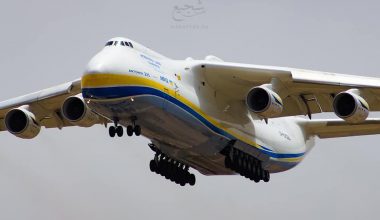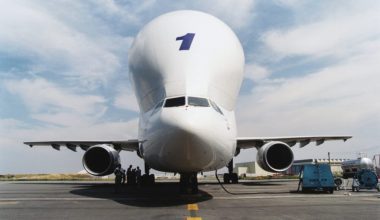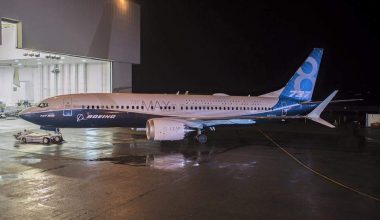Over the last two decades, many full-service carriers have ventured into the low-cost carrier space. They have increasingly set up a low-cost subsidiary to counteract low-cost competition and ensure more efficient operations. One such carrier is Lufthansa, which acquires control of Eurowings, a leading German low-cost carrier. At some point, Lufthansa was also the owner of the budget regional airline Germanwings. Founded in 1997, Germanwings specializes in offering low-cost short-haul products across Europe. The German low-fare airline ceased its operations in April 2020 as a part of a sweeping restructuring prompted by the coronavirus pandemic.

Over its 23 years of existence, Germanwings saw several management changes. In this guide, we’ll dig into the details of Germanwings, including its history, destinations served, etc.
Birth of Germanwings
Looking back at its history, Germanwings was founded in 1997 as a low-cost division of Eurowings. The division became a separate company and was rebranded as Germanwings in 2002.
Based in Cologne, Germanwings concentrated its passenger traffic and flight operations from Cologne/Bonn, Stuttgart, and Berlin-Schonefeld. Soon, it became a fast-growing German low-cost carrier and opened its fourth base at Hamburg Airport in November 2005. Germanwings operated an all-Airbus fleet of 19 aircraft at that time.
In December 2005, the airline entered an agreement with Airbus confirming the order for 18 156-seat A319s with 12 options.
Germanwings as a fully-owned subsidiary of Lufthansa
As of 31 December 2006, Lufthansa had a 49% stake in Eurowings, which was the owner of Germanwings at the time. In 2008, initial plans were made to merge these two airlines with TUIfly into a joint and independent holding company. It was an attempt to push Air Berlin and its subsidiary LTU out of the German market and compete with easyJet and Ryanair on international routes. The plan didn’t materialize; instead, Lufthansa purchased 100% of the stake in Germanwings from Eurowings.

The German flag carrier acquired Cologne-based LCC on 1 January 2009.
The takeover of Lufthansa routes
In 2013, Germanwings became the beneficiary of Deutsche Lufthansa’s point-to-point short-haul routes outside its main Frankfurt and Munich hubs. As a part of a cost-reduction effort, Lufthansa transferred its short-haul operations from cities other than Frankfurt and Munich to Germanwings.
The addition of 30 Lufthansa aircraft accompanied the route transfer. Furthermore, the 23 CRJ900s operated by Eurowings for Lufthansa flights not flying out of Frankfurt and Munich were to be added to Germanwings’ fleet. Overall, the reorganization led to the transformation of the Germanwings fleet from an all-A319-100 outfit into one that numbered 83 active planes, most of them being A319 and A320 jets.
The migration of Lufthansa’s Europe and domestic routes to the low-cost subsidiary started in July 2013 and was completed in January 2015. This way, Germanwings took over Lufthansa’s national routes and overseas traffic to/from Germany. The carrier was rebranded and repositioned as a hybrid concept as a part of the 2013 restructuring of Germanwings.
The German flag carrier intended to operate regional services with lower cost overheads and regain profit in those routes. The move also narrowed Lufthansa’s operations to Munich and Frankfurt hubs alongside Chicago and Newark flights out of Dusseldorf Airport. Combining domestic and short international flights under Germanwings allowed Lufthansa to focus on intercontinental services to North America and Asia.
Fusing Germanwings into Eurowings
The fate of the Germanwings unit took a new turn when Lufthansa decided to integrate it into Eurowings in 2015. The German low-cost subsidiary conducted its operations separately until that point.
In early 2015, Lufthansa announced discontinuing the Germanwings brand and consolidating its low-cost operations under the Eurowings subsidiary. Although Germanwings was a success, the Euro-major transferred the operations to Eurowings to slash costs and restructure operations. By switching to Eurowings, Lufthansa hoped to stand up to big pan-European low-cost operators Ryanair and EasyJet. In the spring of 2015, Eurowings transformed a regional airline into a low-cost carrier in the fight to stem the advances of other European LCCs.

By October 2015, Eurowings incorporated 55 Germanwings routes in their merger. Following the integration, the Eurowings Group initially took over Germanwings bases in Dusseldorf Airport, Hamburg Airport, and Cologne Boon Airport.
Despite Lufthansa’s original plan to offload Germanwings, it continued to operate as a company. When Lufthansa completed the Germanwings-Eurowings merger in January 2016, Germanwings could no longer perform any of its flights. The sole responsibility of handing over all the sales under this brand was passed over to Eurowings from that date. The Cologne-based carrier had to use the Eurowings brand to operate flights.
Life after merger
Before Germanwings was integrated into its former parent company Eurowings, its route network covered 117 destinations in 31 countries. But this was short-lived as Eurowings took over the majority of its routes.
Post-merger, Germanwings began flying as a wet-lease operator for Eurowings under the EW code. It operated some of Eurowings’ short-haul flights under a wet-lease contract.
Closure of Germanwings
Germanwings is one of many airlines that ceased operations after the COVID-19 pandemic. Although the Lufthansa subsidiary didn’t operate independently, it still had some presence as a wet-lease operator. The COVID-19 pandemic was the final straw for this once-dominant German carrier and led to the closure of its flight operations.
The significant decline in air travel due to the coronavirus pandemic compelled Lufthansa Group to downsize its operations. It launched a sweeping restructuring program that accelerated the execution of Eurowings’ objectives of consolidating flight operations into a single operating entity. This also marked the cessation of its Germanwings low-fare subsidiary, which was operating under the Eurowings brand. In April 2020, Germanwings exited the notoriously fickle industry after 23 years of service.

Destinations served by Germanwings
At its peak, Lufthansa’s regional budget subsidiary Germanwings served plenty of European destinations. It operated a network of international flights to Spain, Italy, Turkey, Greece, France, the UK, Romania, Belgium, Hungary, Croatia, Switzerland, Austria, Poland, Cyprus, etc.
Notable destinations include:
Domestic (inside Germany)
- Berlin
- Bremen
- Dortmund
- Dusseldorf
- Hamburg
- Hannover
- Heringsdorf
- Leipzig/Halle
- Munich
- Nuremberg
- Rostock
- Stuttgart
International (outside the country)
Spain
- Barcelona
- Bilbao
- Fuerteventura
- Gran Canaria
- Ibiza
- Jerez de la Frontera
- Malaga
- Palma de Mallorca
- Tenerife
- Valencia
France
- Calvi
- Montpellier
- Nice
- Paris Charles de Gaulle
Turkey
- Adana
- Antalya
- Bodrum
- Istanbul
Italy
- Bari
- Bologna
- Cagliari
- Catania
- Milan
- Naples
- Olbia
- Pisa
- Rome
- Venice
- Verona
The United Kingdom
- Jersey
- London Heathrow
- London Stansted
- Manchester
- Newquay
Switzerland
- Geneva
- Zurich, etc.
Fleet
Over its lifetime, Germanwings mostly operated Airbus aircraft models. For a brief period, i.e., between 2004 and 2005, it used two Boeing 717-200s leased from Aerolineas de Baleares. Likewise, it leased one McDonnell Douglas MD-81, one MD-83 from Nordic Airways, and one Douglas MD-82 from FlyNordia in 2007.
Across its 2-decade history, Lufthansa’s low-fare subsidiary flew 50 Airbus A319-900s and 26 Airbus A320-200s. Introduced in 2002, the Airbus A319 operated the flights for 18 years until 2020. The European narrowbody aircraft also operated flights for Eurowings Groups between 2015 and 2020.
Flight 9525 crash
Lufhansa’s low-cost carrier Germanwings had an excellent safety record until one copilot deliberately crashed an Airbus A320-211 aircraft in 2015. The 24-year-old A320-211 (D-AIPX), performing Germanwings Flight 9525, carried 144 passengers and six crew from Barcelona El-Prat to Dusseldorf. Assuming the aircraft’s control was the pilot in command, Patrick Sondenheimer, and copilot Andreas Gunter Lubitz.
34-year-old Captain Patrick had racked up 6,000 flight hours over his ten years of experience. The 27-year-old copilot Lubitz had accrued 630 flying hours and joined airlines as a first officer in June 2014. During his pilot training in Bremen, he was hospitalized for a severe depressive episode. After nine months of rest, he returned to his flight school and later moved to the US for additional training.
On the fateful day of 24 March 2015, a total of 150 people died due to suicide by the copilot. Despite being declared unfit to fly by the doctor for his suicidal tendencies, the copilot still reported for duty. Shortly after reaching the cruise altitude of FL380 at 10:27, the captain left the cockpit to use the toilet. That’s when Lubitz locked the cockpit door and changed the flight control unit’s selected altitude to 100ft.
Captain Patrick put in a code to unlock the door, but the copilot disabled the lock’s code panel using cockpit controls. He requested re-entry, knocked, banged, and attempted to break in but to no avail. The depressed copilot initiated a controlled descent by setting the autopilot to 100ft (30m) and then accelerated the aircraft’s speed. The plane descended at around 3400ft/ min and hit a mountainside near Prads-Haute-Bleone, France.
All passengers and crew aboard Flight 9525 died due to the deliberate and planned action of the copilot, who was experiencing a mental disorder with psychotic symptoms.






